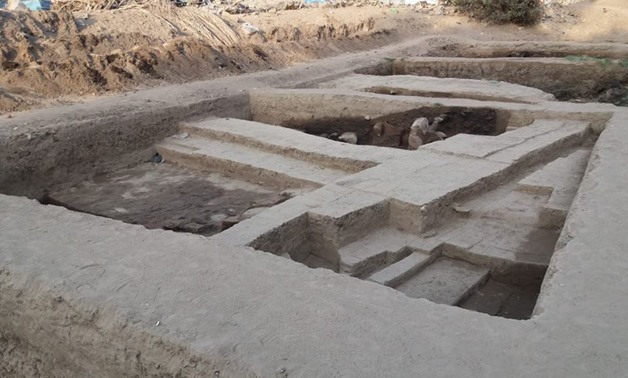
An Egyptian–German archaeological mission uncovered a number of inscription fragments and fragments of smaller statuary at the Temple of the Sun in Matariya, in piles close to lime burning installations - Ministry of Antiquities Official Facebook Page.
CAIRO – 6 November 2018: An Egyptian–German archaeological mission uncovered a number of inscription fragments and fragments of smaller statuary at the Temple of the Sun in Matariya, in piles close to lime burning installations.

The discovered fragments date back to the 12th and 20th dynasties as well as the Third Intermediate Period, according to Ayman Ashmawy, head of the Ancient Egyptian Antiquities sector at the Ministry of Antiquities and head of the Egyptian side of the mission.

The head of the German side of the mission explained that the discovered inscriptions refer to the creator God Atum as being responsible for the flood of the Nile. He added that the discovered items probably date back to the Late Period (664-332BC).

Most of the uncovered structures bear traces of reuse and destruction by fire. Khaled abul Ela, director of the inspectorate of Ain Shams and Matariya archaeological site, added that a protection shelter was established in the Open Air Museum in Matariya.

The museum will be opened to the public by the end of 2018 and it will include basalt reliefs, reliefs of the Heliopolis Temple for Atum and Nektanebu I, limestone relief and inscriptions from the Ramesside era, in addition to selected artifacts from the necropolis of Heliopolis.

It is worth mentioning that the archaeological mission working at the archaeological site in Matariya found a full ancient royal celebration hall dating back to the era of Ramses II.
A royal celebration hall was discovered during excavation work performed by the Ain Shams University archaeological mission headed by Mamdouh al-Damati on Thursday, October 25.
Damati referred that the hall was used for holding royal celebrations such as the Jubilee feast, and is considered the first of its kind in the New Kingdom.
Meanwhile, an important collection of the soft-brick buildings was discovered, where they found a large storage pottery jar.
In April, a part of the ancient royal celebration hall dating back to the era of Ramses II was discovered in Matariya.
“The hall was unearthed below the soft-brick buildings and commercial residential areas that date back to the third transition period, particularly the 22nd and 23rd dynasties’ eras,” Damati previously recounted.
The discovered hall has a rectangular floor of 2.9 m × 1.9 m, consisting of limestone tiles, and rising 80 cm above the ground.
Damati said that the mission also uncovered many other artifacts, including pottery, and some stone blocks with hieroglyphic inscriptions and the cartouche of King Ramses III engraved on one of them.
He explained that this discovery reveals that such celebrations took place in the Re Temple at this specific area. He added that the hall was discovered inside the palace that used to host royal celebrations.
Damati elaborated that the mission members also unearthed a group of brick walls of a multi-story building, pointing out that this depicts the three phases of construction dating back to the era of King Ramses II.
The archaeological mission discovered a number of valuable artifacts, such as five stone blocks carved from the reign of King Ramses II, a painting of the high priests of the Sun Prince Nept Ma Raa, in addition to some pottery figures dating back to the 27th Dynasty, one of which was a small dog-shaped statue.
Damati stated that an amulet with a human head for a person named Thi from the Roman era is considered one of the most important pieces discovered






Comments
Leave a Comment